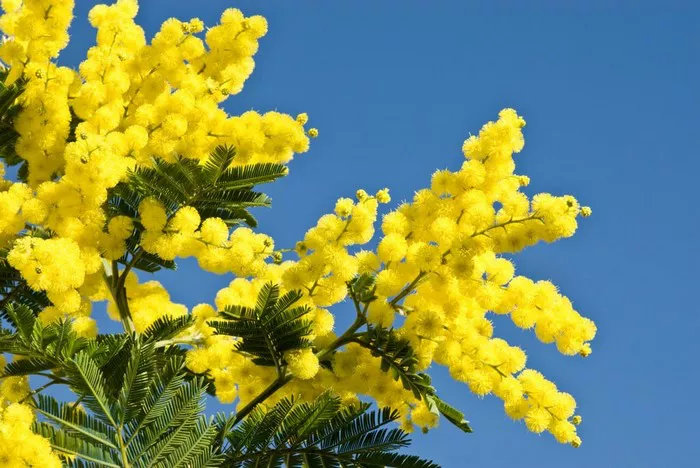In the picturesque landscapes of the south of France, amid the renowned wineries and fields of lavender, there exists an unexpected emblem of beauty and resilience – the Australian Silver Wattle, affectionately known as “mimosa”. Despite its antipodean origins, this vibrant yellow blossom has nestled its way into the hearts and culture of Europe, particularly in France, Italy, and Spain. This article embarks on a botanical and cultural journey, tracing the migration of mimosa from the Australian bushlands to becoming a cherished symbol across the European continent.
1. Roots in Foreign Soil
The tale of mimosa’s European journey begins with the French botanist and cartographer, Nicolas Baudin, who, in the 19th century, circumnavigated the vast expanse of Australia. Among his botanical discoveries was the Australian Silver Wattle, a tree adorned with delicate, golden flowers. Entranced by its beauty and resilience, Baudin brought samples of the wattle back to France, where it found a new home in the gardens of Josephine Bonaparte, wife of the esteemed Napoleon Bonaparte. Thus, the first seeds of mimosa were sown on European soil, igniting a love affair that would endure through the ages.
2. Cultivation and Celebration
In the sun-kissed regions of southern France, the mimosa found a welcoming environment to flourish. Wealthy aristocrats, captivated by its golden blooms, cultivated the wattle in their gardens, transforming the landscape into a sea of yellow during the flowering season. Over time, mimosa became deeply intertwined with French culture, so much so that its Australian origins were often forgotten or overlooked. The town of Mandelieu-la-Napoule proudly proclaims itself as the ‘Capital of Mimosa’, hosting an annual festival to celebrate this beloved flower, showcasing its beauty and significance to locals and visitors alike.
3. Mimosa in Italian Culture
Across the border in Italy, mimosa found a new role as a symbol of strength, resilience, and femininity. The Italian tradition of honoring women on International Women’s Day is deeply rooted in the giving of mimosa flowers. Teresa Mattei, an influential women’s rights activist, proposed mimosa as a symbol for the holiday, citing its affordability and accessibility compared to other flowers. In post-World War II Italy, where economic recovery was paramount, mimosa offered a beacon of hope and solidarity, embodying the spirit of resilience in the face of adversity. Thus, mimosa became an integral part of Italian culture, adorning bouquets gifted by men to the women in their lives as a gesture of love and appreciation.
4. Mimosa Across Europe
Beyond France and Italy, mimosa has also found its way into the cultural fabric of other European nations. In Spain, mimosa graces gardens and landscapes, its vibrant blooms adding a splash of color to the Iberian Peninsula. While not as deeply ingrained in Spanish culture as in France or Italy, mimosa still holds significance as a symbol of beauty and resilience. Throughout Europe, mimosa serves as a reminder of the interconnectedness of the natural world and the enduring human fascination with flora from distant lands.
5. Conservation and Sustainability
As mimosa continues to enchant Europeans with its beauty, efforts are underway to ensure its preservation for future generations. Conservationists and botanists work tirelessly to protect native Australian habitats where mimosa thrives, safeguarding biodiversity and ecological balance. Sustainable cultivation practices are also being implemented in Europe to ensure responsible harvesting of mimosa for commercial and cultural purposes. By promoting awareness and appreciation for mimosa’s origins and ecological importance, Europeans can continue to enjoy this beloved flower while preserving its natural habitats for years to come.
Conclusion
The story of mimosa is a testament to the enduring power of nature to transcend borders and captivate the human spirit. From its humble beginnings in the Australian bushlands to its exalted status as a symbol of Europe, mimosa embodies beauty, resilience, and cultural exchange. As we marvel at the golden blooms adorning gardens and landscapes across the continent, let us remember the journey of mimosa and the diverse ecosystems it represents. In celebrating mimosa, we celebrate the interconnectedness of our world and the rich tapestry of life that sustains us all.


